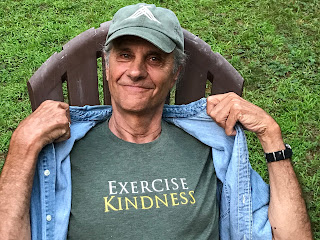The Intersections of Service-Learning and Social Justice: What Can History Teach Us?
What is the difference or rather relationship between social
justice and service-learning? And why are more of the tools used in social
justice activism not used in service-learning? These distinctions may not be as
evident in Friends Schools, but they were blatantly evident to me while I
attended the National Service-Learning Conference in Washington, D.C. this month.
My professional work centers around using service-learning as a tool for teaching about global citizenship. And I have found that when I work with Friends Schools many of the teachers and the students are fairly well informed of the concepts embedded in the term “social justice.” Some of these concepts include the intersections of History, Power, and Relationships. So after I returned from the conference, I found myself wondering, “how well do Friends schools seek out historical examples of Quakers who dedicated their lives to working to both understand and sometimes untangle these intersections?” And for those who might be interested in doing just that, here is a good place to start:
“Gay, Black, and Quaker: History Catches Up with Bayard Rustin” By Stephen W. Angell and Leigh Eason.
My professional work centers around using service-learning as a tool for teaching about global citizenship. And I have found that when I work with Friends Schools many of the teachers and the students are fairly well informed of the concepts embedded in the term “social justice.” Some of these concepts include the intersections of History, Power, and Relationships. So after I returned from the conference, I found myself wondering, “how well do Friends schools seek out historical examples of Quakers who dedicated their lives to working to both understand and sometimes untangle these intersections?” And for those who might be interested in doing just that, here is a good place to start:
“Gay, Black, and Quaker: History Catches Up with Bayard Rustin” By Stephen W. Angell and Leigh Eason.
http://www.religiondispatches.org/archive/politics/5840/gay%2C_black%2C_and_quaker%3A_history_catches_up_with_bayard_rustin/
And Stephen W. Angell’s latest book, co-authored with Hal Weaver and Paul Kriese, is also a must read! Black Fire: African American Quakers on Spirituality and Human Rights (Quaker Press of Friends General Conference, 2011).
And Stephen W. Angell’s latest book, co-authored with Hal Weaver and Paul Kriese, is also a must read! Black Fire: African American Quakers on Spirituality and Human Rights (Quaker Press of Friends General Conference, 2011).


Comments
Post a Comment